So, you’ve been admiring beautiful artwork and are itching to give it a go yourself, huh? You’re in luck! This guide is here to help you discover how to start painting as a hobby, turning your creative dreams into vibrant masterpieces. Not only is painting an enjoyable and rewarding way to spend your time, but it also comes with a whole bunch of perks like busting stress, boosting creativity, and giving you a real sense of achievement. Don’t worry if you’re an absolute newbie or just someone who’s dabbled in painting before – this article has got you covered with all the must-know steps, tools, and techniques to kick off your artistic adventure. So, what are we waiting for? Let’s jump right into the colorful world of painting and learn how to start painting as a hobby together!
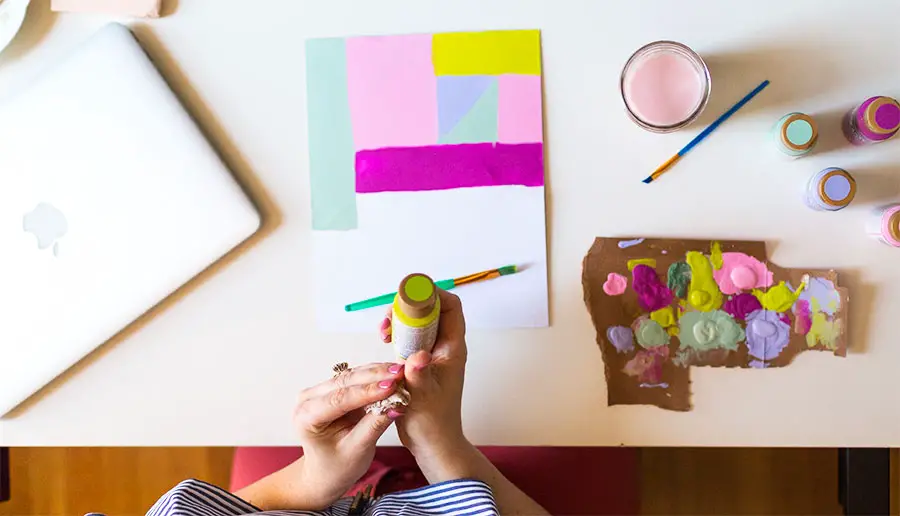
Choosing Your Painting Style
Before you dive into painting, it’s essential to explore different painting styles and mediums to find the one that resonates with you the most. Each style has its unique characteristics, techniques, and challenges. Let’s take a closer look at four popular painting styles to help you make your decision.
Acrylic painting
Acrylics are a versatile and beginner-friendly medium. They’re water-soluble, which means you can easily thin them with water or clean your brushes after use. Acrylics dry quickly, allowing you to build layers and make corrections without waiting too long. They can be used on various surfaces like canvas, wood, and paper, and you can achieve both transparent and opaque effects depending on how much water you add.
Watercolor painting
Watercolors are known for their delicate, transparent, and luminous quality. They can create beautiful, ethereal effects and are ideal for capturing the subtle nuances of light and color. Watercolors are typically used on special watercolor paper, and controlling the water flow is key to mastering this medium. It might take some practice, but the results can be truly stunning.
Oil painting
Oil painting has been a favorite among artists for centuries. Known for their rich colors and slow drying time, oil paints allow for extended blending and greater control over your work. Oil painting often involves building up layers called “glazes” to create depth and dimension. It’s worth noting that oil paints require solvents, like turpentine or mineral spirits, for thinning and cleaning brushes.
Gouache painting
Gouache is a lesser-known but equally fascinating medium. It is similar to watercolor but has a higher pigment concentration, which makes it more opaque. Gouache dries to a velvety matte finish and can be reactivated with water even after it has dried. This characteristic makes it easy to correct mistakes, but it can also lead to unintended blending if you’re not careful. Gouache is often used in illustration and design work due to its vibrant colors and ability to be used on various surfaces, including watercolor paper, illustration board, and canvas.
Now that you’re familiar with these four popular painting styles, consider experimenting with each to discover which one best suits your artistic preferences and goals. Remember, there’s no rule that says you can’t try more than one style or even combine them in your artwork. The most important thing is to enjoy the process and let your creativity flow.
Essential Painting Supplies
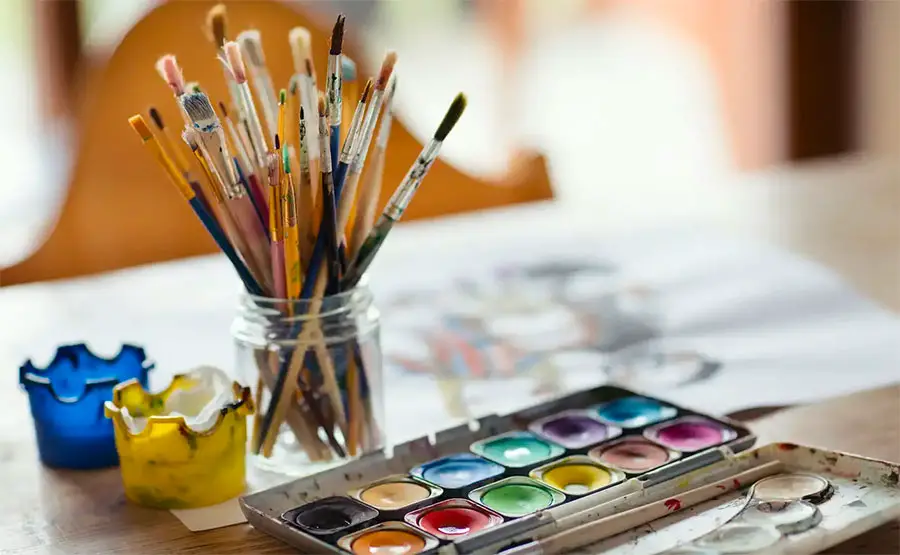
To start painting as a hobby, you’ll need to gather a few essential supplies. While the specific materials may vary depending on your chosen painting style, here’s a list of basics to help you get started:
Paints
Choose paints based on your preferred painting style. Acrylic, watercolor, oil, and gouache paints are available in a variety of brands and price ranges. Start with a basic set of colors and expand your collection as you develop your skills and preferences.
Brushes
A good set of brushes is crucial for achieving different effects and textures. There are various brush types, sizes, and shapes, each suited for specific techniques. For beginners, it’s wise to invest in a starter set that includes a range of brush sizes and shapes, like round, flat, and filbert brushes.
Painting surfaces
The painting surface you choose depends on your medium. For acrylics and oils, stretched canvas or canvas panels are popular choices. Watercolor artists typically use watercolor paper, which comes in different weights and textures. Gouache can be used on watercolor paper, illustration board, or even canvas.
Palette
A palette is essential for mixing and holding your paints while you work. There are various types, including plastic, glass, or wooden palettes. Disposable paper palettes are a convenient option, as they allow for easy cleanup.
Easel
An easel provides a stable surface to hold your painting while you work. There are many different styles, such as tabletop or standing easels, and they come in various materials like wood or metal. An easel isn’t strictly necessary, especially for smaller works, but it can be beneficial for posture and comfort during longer painting sessions.
Other accessories
In addition to the primary painting supplies, you’ll also need a few additional accessories to ensure a smooth and enjoyable painting experience:
- Cleaning supplies: Keep some paper towels or a clean rag handy for wiping excess paint off your brushes or cleaning up spills. For acrylic and watercolor paints, water is sufficient for cleaning your brushes. For oil paints, you’ll need solvents like turpentine or mineral spirits.
- Containers: You’ll need a container to hold water or solvents for cleaning your brushes. For acrylic and watercolor painting, a simple plastic or glass jar works well. For oil painting, a lidded container or jar designed for holding solvents is recommended.
- Protective gear: Consider wearing an apron or old clothes to protect yourself from paint splatters. You may also want to cover your work surface with a drop cloth or plastic sheeting for easy cleanup.
- Palette knife: A palette knife is a useful tool for mixing paints and can also be used to create unique textures and effects in your artwork.
- Spray bottle: If you’re working with acrylics or watercolors, a spray bottle filled with water can help keep your paints moist and workable on the palette.
- Varnish and fixatives: Depending on your medium, you may need varnish (for acrylic and oil paintings) or fixative spray (for watercolor and gouache paintings) to protect your finished artwork from dust, dirt, and fading.
By gathering these essential supplies and accessories, you’ll be well-prepared to start painting as a hobby and explore your artistic potential.
Setting Up Your Workspace

Creating a suitable workspace is crucial for comfortable and productive painting sessions. Here are some key factors to consider:
Selecting a location
Choose a location with ample space to accommodate your painting supplies and artwork. Ideally, the space should be well-lit, well-ventilated, and free from distractions like noise or interruptions. A dedicated room or corner of a room can work well, but make sure you have enough space to move around and work comfortably.
Organizing your materials
Having a well-organized workspace can save you time and reduce frustration. Consider investing in a storage system or shelving to keep your painting supplies neatly arranged and easily accessible. Labeling your materials can also be helpful, especially if you have multiple paint colors or brush sizes.
Ensuring proper lighting and ventilation
Good lighting is essential for accurate color perception and eye comfort. Natural light is ideal, but if that’s not possible, invest in high-quality artificial lighting that provides consistent, bright illumination. Proper ventilation is also crucial, especially if you’re working with oil paints or solvents. Ensure that your workspace has adequate airflow and consider using a fan or air purifier if needed.
By taking the time to create a well-organized, well-lit, and well-ventilated workspace, you’ll be able to focus on your painting and make the most of your time and materials.
Learning Basic Painting Techniques
Learning basic painting techniques is essential for developing your skills and creating successful artworks. Here are five fundamental techniques to get you started:
Color mixing
Mixing colors is a vital skill in painting. With a limited number of paint colors, you can create an endless variety of hues and shades by mixing them together. Practice creating a color wheel to learn how to mix primary colors to make secondary and tertiary colors. Experiment with mixing complementary colors (opposites on the color wheel) to create neutral grays or browns.
Brushwork
Brushwork refers to the way you handle your brushes to create different effects and textures. Experiment with different brush sizes and shapes to create thin, thick, or textured brushstrokes. Practice holding the brush at different angles to create a variety of marks, from fine lines to broad strokes.
Layering
Layering involves building up multiple thin layers of paint to create depth and dimension in your artwork. Start with a base layer of paint and add subsequent layers, allowing each layer to dry before applying the next. Experiment with layering colors to create interesting effects and to achieve a range of tones and values.
Blending
Blending is the process of mixing wet paint on the canvas to create a smooth transition between colors or values. Wet-on-wet blending involves applying wet paint to a wet surface, while wet-on-dry blending involves applying wet paint to a dry surface. Practice blending with a soft brush or a blending tool to create seamless transitions.
Creating texture
Texture refers to the physical quality of the paint surface. You can create texture in your artwork by using different brushstrokes, layering paint, or applying paint with a palette knife. Experiment with creating different textures, from smooth and glossy to rough and tactile.
By practicing these basic techniques, you’ll develop your skills and confidence as a painter. Remember, painting is a journey of exploration and experimentation, so don’t be afraid to make mistakes and try new things.
Great Video
Finding Inspiration and Developing Your Style
As you continue to paint, you’ll likely develop your own unique style and creative voice. Here are four tips for finding inspiration and developing your artistic identity:
Observing your surroundings
Look around you for inspiration. Pay attention to colors, shapes, and patterns in everyday objects, nature, or architecture. Take photos or sketches to capture interesting compositions or color combinations that you can later incorporate into your artwork.
Studying famous artists and art movements
Studying the works of famous artists and art movements can provide inspiration and insights into different techniques, styles, and subject matter. Visit art museums or galleries, read books or articles, or take online courses to expand your knowledge and appreciation of art.
Experimenting with different techniques and subjects
Don’t be afraid to try new things and step outside your comfort zone. Experiment with different techniques, mediums, and subjects to discover what resonates with you the most. Keep a sketchbook or journal to document your ideas and progress.
Connecting with fellow artists and joining communities
Connecting with fellow artists can provide valuable feedback, support, and inspiration. Consider joining local art clubs or online communities to share your artwork, ask for advice, or participate in group exhibitions or events.
Remember, developing your style and voice as an artist takes time and practice. Stay curious, keep learning, and enjoy the process of creating art.
Tips for Beginners
Starting a new hobby like painting can be intimidating, but with patience and practice, anyone can learn to create beautiful artworks. Here are four tips for beginners:
Start with simple subjects
Beginners should start with simple subjects, like still life objects or landscapes, to practice basic techniques and gain confidence. Choose subjects that you’re familiar with and that inspire you.
Be patient and practice regularly
Painting is a skill that takes time and practice to develop. Be patient with yourself and don’t expect to create masterpieces overnight. Set aside time each week to practice and experiment with different techniques and subjects.
Don’t be afraid to make mistakes
Making mistakes is an essential part of the learning process. Embrace your mistakes and use them as opportunities to learn and improve. Don’t be too hard on yourself, and remember that even professional artists make mistakes.
Seek feedback and learn from critiques
Getting feedback from other artists or art teachers can provide valuable insights and help you identify areas to improve. Don’t take critiques personally, but use them as opportunities to grow and develop your skills. Consider joining a local art group or taking a class to connect with other artists and receive feedback.
By following these tips, beginners can build a solid foundation in painting and develop their skills and creativity over time. Remember, the most important thing is to have fun and enjoy the process of creating art.
Resources for Learning and Improvement
If you’re looking to improve your painting skills, there are many resources available to help you learn and grow as an artist. Here are four types of resources to consider:
Online tutorials and classes
The internet is a wealth of information when it comes to painting. There are countless online tutorials, classes, and video courses available for free or for a fee. Look for tutorials and classes that cover topics you’re interested in or that cater to your skill level.
Books and magazines
Books and magazines are another excellent resource for learning and inspiration. Look for books on painting techniques, color theory, or specific artists or art movements. Art magazines can provide updates on the latest trends and techniques in the art world.
Local workshops and art classes
Local art workshops and classes provide opportunities to learn from experienced artists and connect with fellow art enthusiasts. Look for classes at community centers, art schools, or museums. Some classes may require registration or a fee.
Art galleries and museums
Visiting art galleries and museums is an excellent way to gain inspiration and learn about different art styles and techniques. Look for exhibitions featuring artists or art movements that interest you. Many galleries and museums also offer workshops or classes related to their exhibitions.
By exploring these resources, you can continue to develop your painting skills and expand your knowledge and appreciation of art. Remember to stay curious, keep learning, and enjoy the process of creating art.
Conclusion
Painting can be a rewarding and fulfilling hobby that provides a creative outlet and a sense of accomplishment. Whether you’re a beginner or an experienced artist, there is always more to learn and discover in the world of painting.
Embrace painting as a hobby and make time for regular practice and experimentation. Remember, painting is a journey of exploration and self-expression, and there is no right or wrong way to create art.
Through painting, you can gain a sense of calm and relaxation, reduce stress, and express your thoughts and emotions. Don’t forget to enjoy the process and have fun creating your artworks.
So, pick up your paintbrushes, gather your supplies, and start exploring the wonderful world of painting as a hobby.
FAQ
Can I learn to paint if I have no prior experience or artistic talent?
Yes, anyone can learn to paint regardless of prior experience or artistic talent. It takes practice and patience to develop your skills.
What type of paints should I use as a beginner?
Acrylic paints are a good option for beginners as they are easy to use and clean up with water.
How do I mix colors to get the exact shade I want?
To mix colors, start with the primary colors (red, blue, and yellow) and experiment with different ratios to create the desired hue. Use a color wheel as a reference.
How do I know what brush to use for different techniques?
Different brushes have different shapes and sizes that are suited for specific techniques. Experiment with different brush types to find what works best for you.
How can I improve my brushwork and create more dynamic brushstrokes?
Practice using different brush techniques and experiment with brush size, pressure, and angle to create varied and interesting brushstrokes.
What type of surface should I use for my paintings?
The surface you choose depends on the medium you’re using and the effect you want to achieve. Common surfaces include canvas, paper, and wood panels.
What is the best way to clean my painting supplies?
Clean your brushes and other supplies with water and soap immediately after use. Avoid letting paint dry on the brushes, as this can damage the bristles.
How can I find my own unique style as a painter?
Experiment with different techniques, subject matter, and mediums to find what resonates with you. Don’t be afraid to take risks and try new things.
How do I overcome creative blocks and artist’s block?
Take a break, try a new technique or subject matter, or seek inspiration from other artists. Sometimes stepping away from your work can help you come back with fresh ideas.
How do I price and sell my artwork?
Research the market and compare your work to other artists with similar styles and experience. Consider factors such as materials, size, and time invested in the piece. You can sell your artwork online, through galleries, or at art fairs and exhibitions.




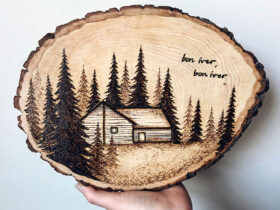
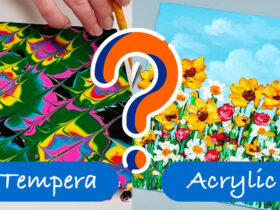
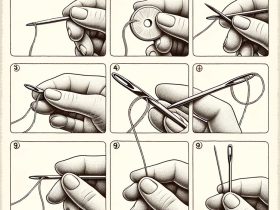
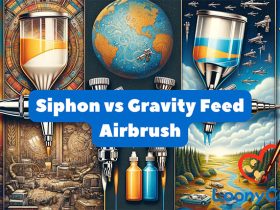

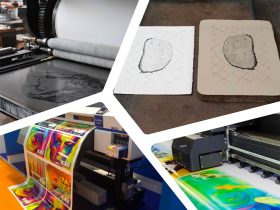


Leave a Reply